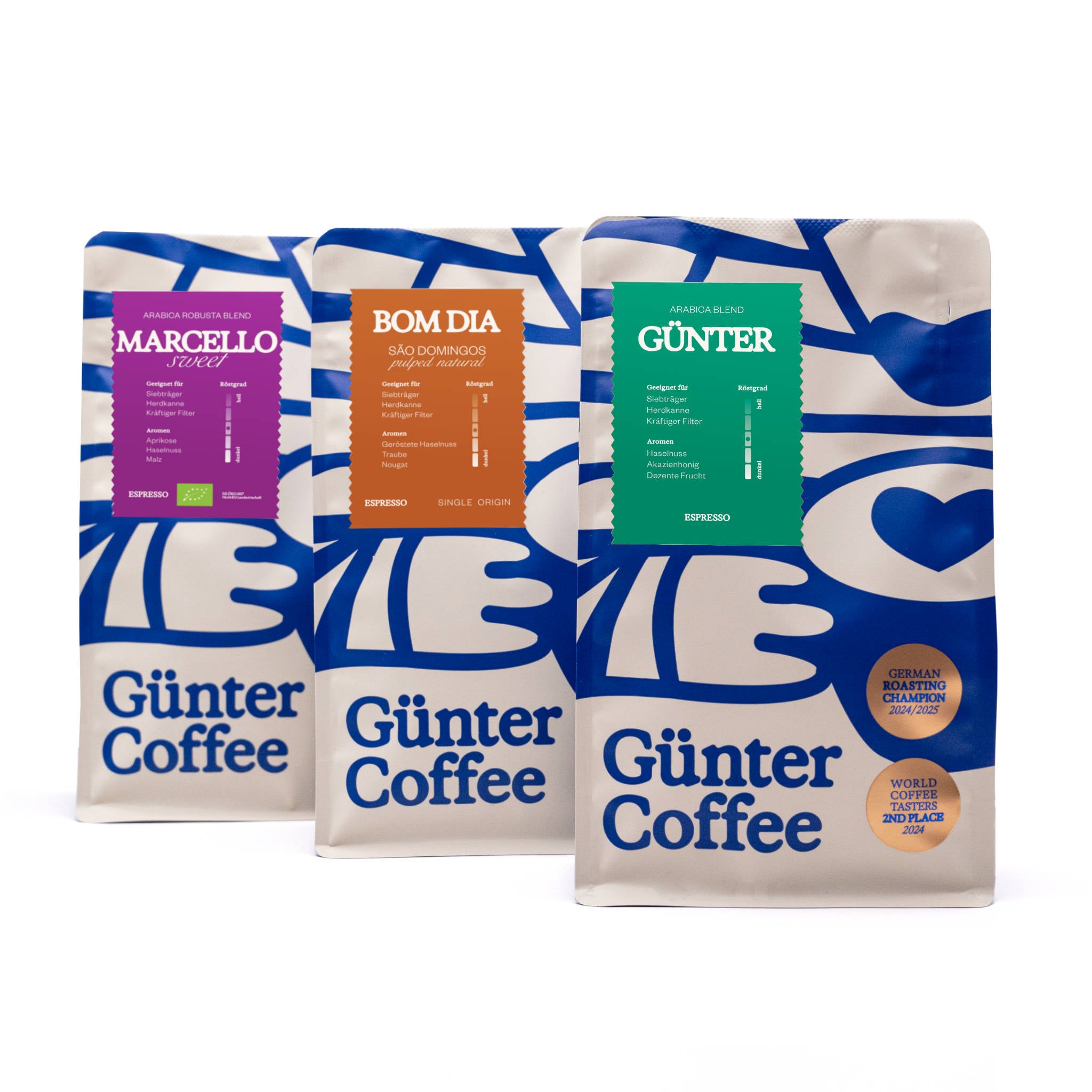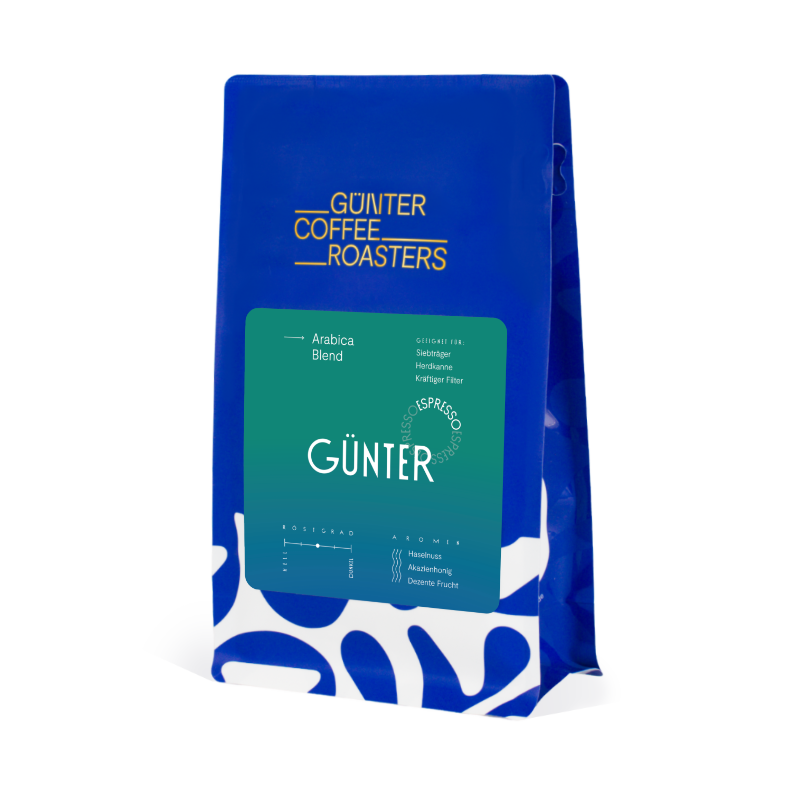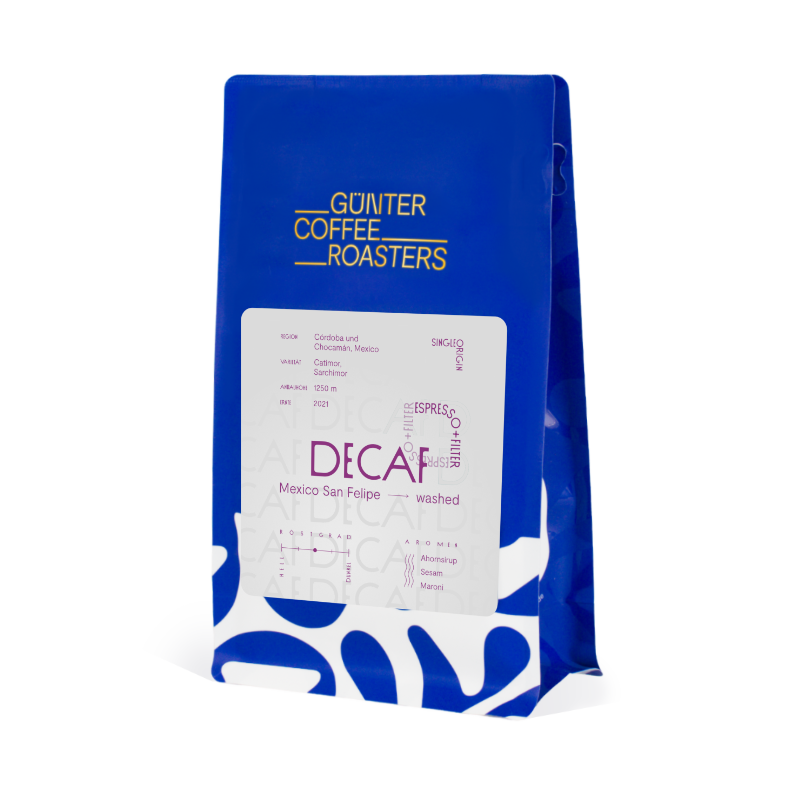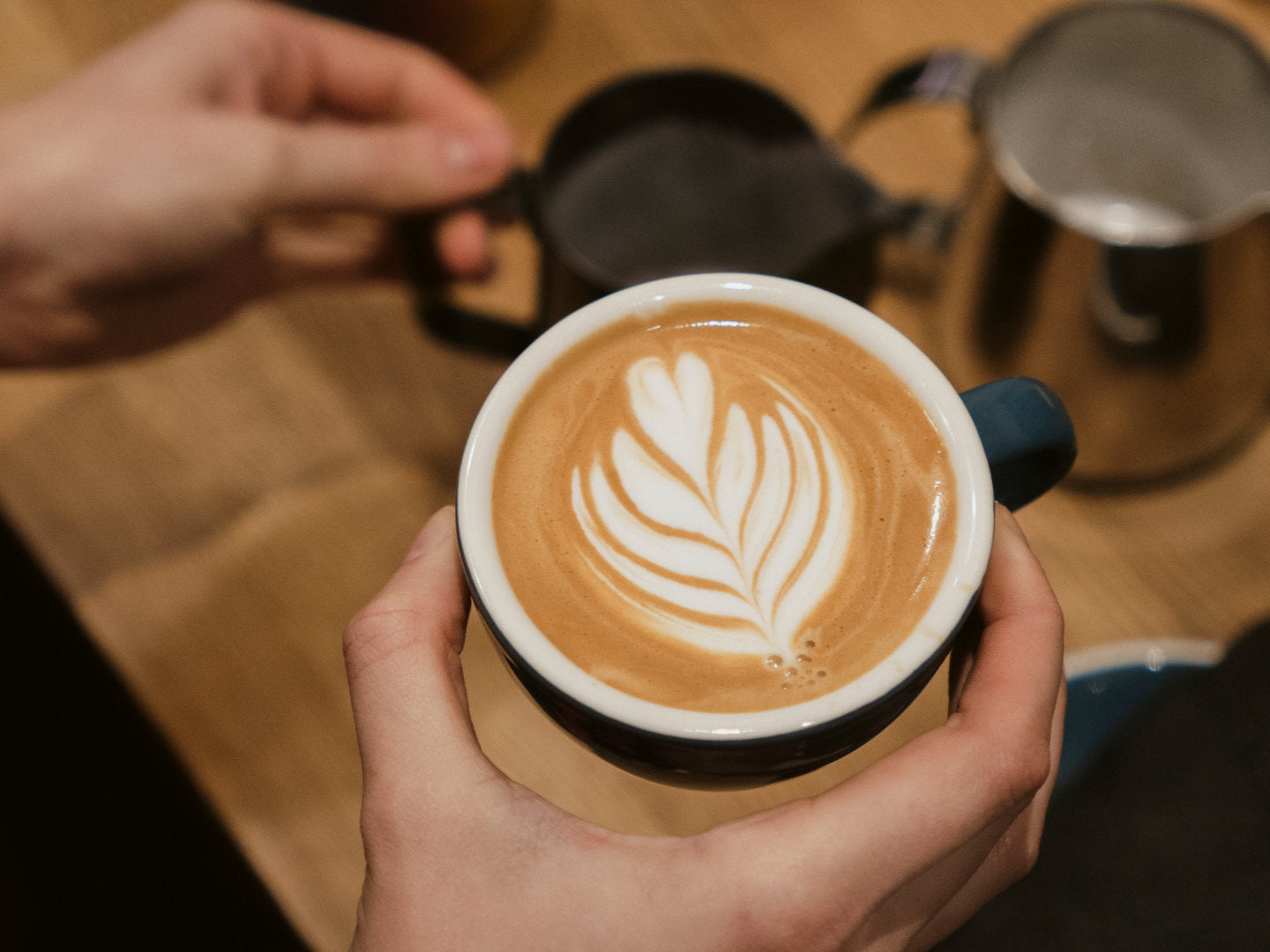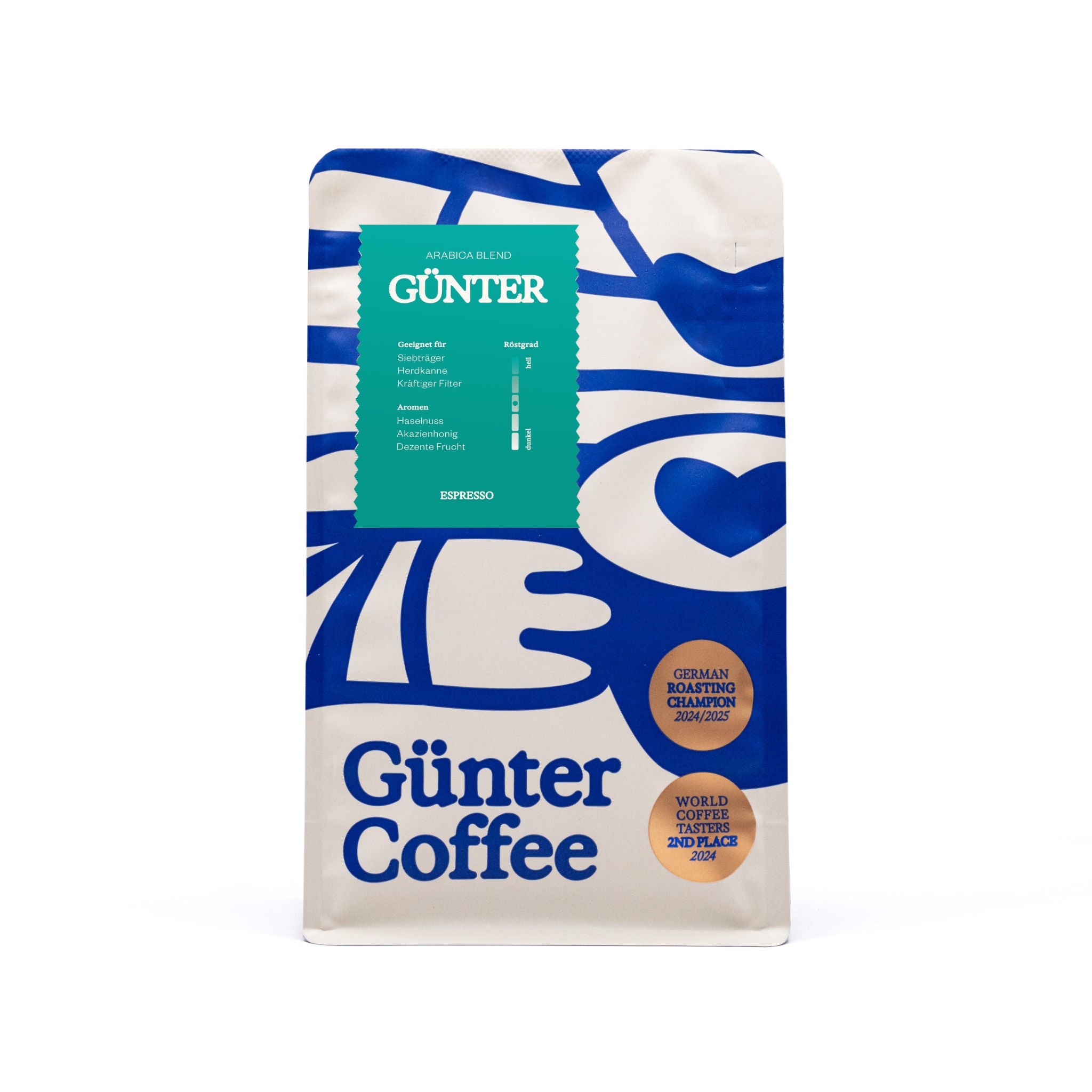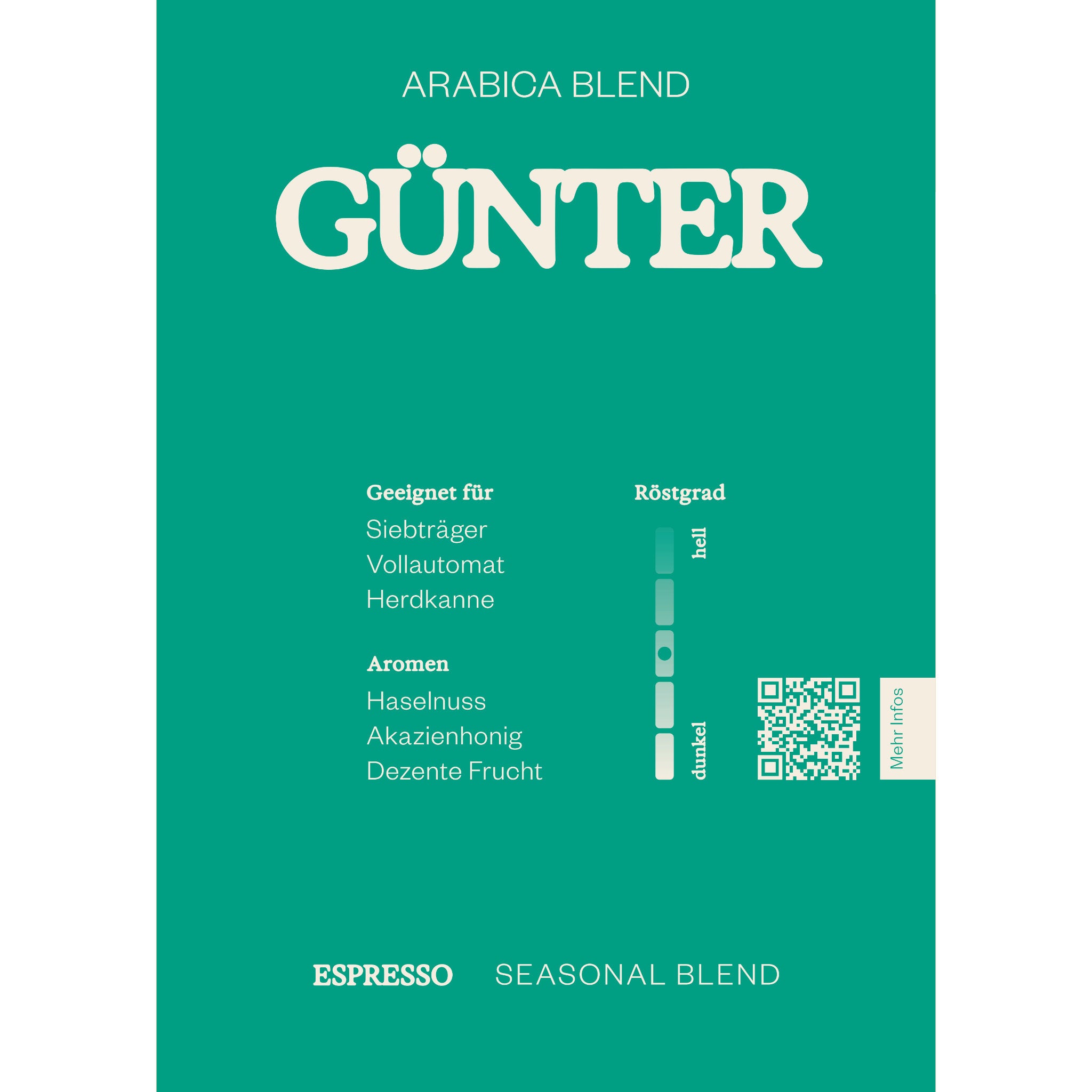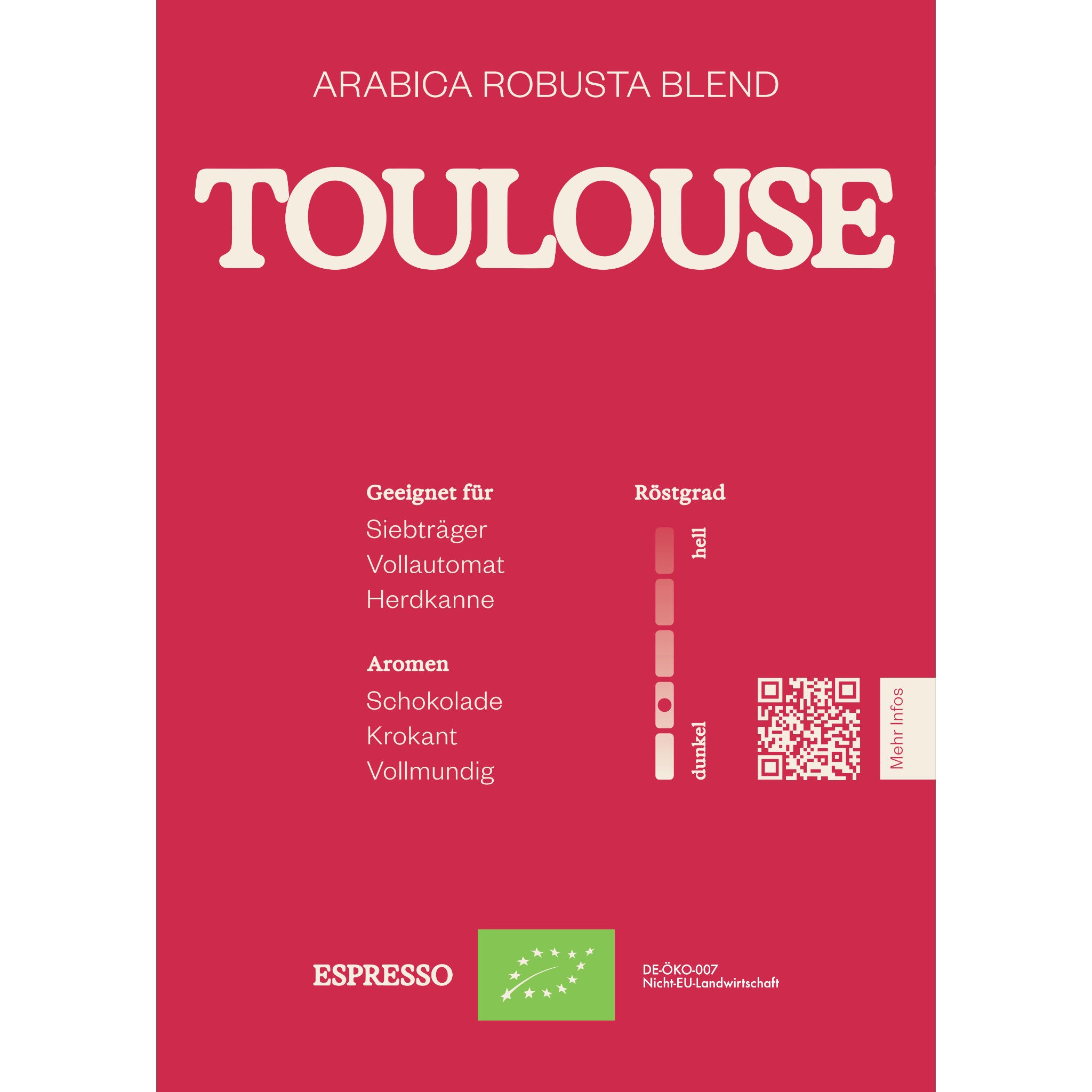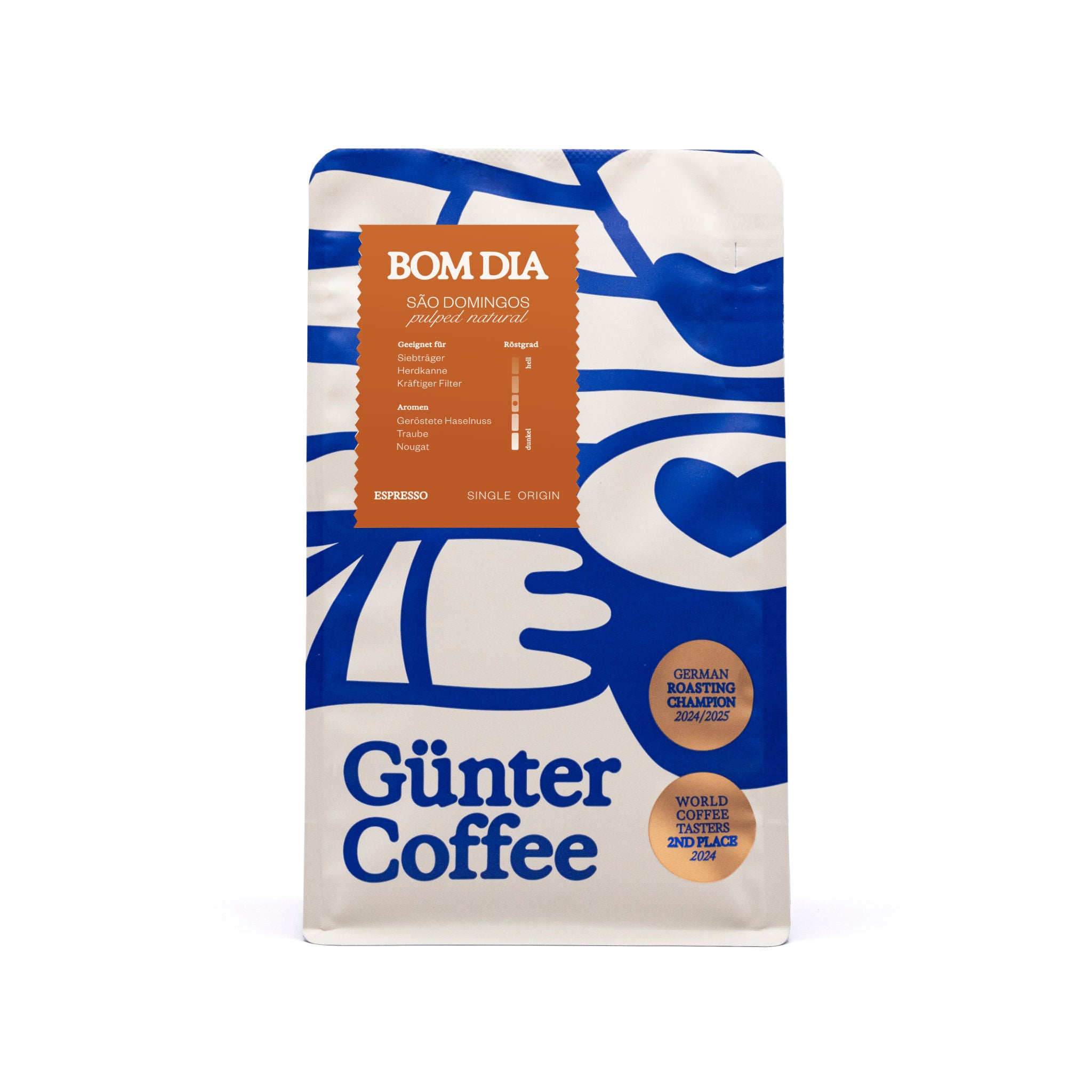To make a delicious cappuccino, you can't avoid using a portafilter machine. A real espresso is the basis for the well-known Italian mixed milk drink. We'll briefly explain how to best prepare it here. For an in depth guide, consult our espresso brew guide.
What you need to make a cappuccino
- Portafilter machine with steam lance
- Coffee grinder
- Coffee beans
- Tamper
- Fine scale
- Milk jug
- Milk or milk alternative (we recommend oat milk)
- Two coffee cups
- Cloth
Everything there? Let's start.
What is a cappuccino?
A cappuccino is a mixed espresso and milk drink. Exact information about the ratio of espresso to milk varies, but the World Barista Championships committee has established the following definition:
"A cappuccino is a coffee and milk beverage that should produce a harmonious balance of rich, sweet milk and espresso. [...] The cappuccino is prepared with one (1) single shot of espresso [Eds. note: defined as 30 ± 5 ml], textured milk and foam. [...] A cappuccino is a beverage between 150 and 180 mL in total volume.”
(2013 WBC Competition Rules).
For these instructions we work with a total volume of 150 ml for 20 ml espresso.
Grind coffee, brew espresso, cold milk ready
The basis for every cappuccino is an espresso, which you get as a single shot, i.e. approx. 20 ml of espresso. For better results, we always get our espresso from the double sieve. To do this, we grind 18 g of coffee with the same grind that we use for a standard espresso and put it in the portafilter. Don't forget to level and tamp! We place two coffee cups under the portafilter, one of which is on a scale. If the scales show 19 g, we stop dispensing and wait until the coffee stops flowing. The processing time should be between 25 and 30 seconds.
After the espresso has brewed, we grab our milk jug, pour cold milk into it (up to the spout) and open the steam wand for a brief moment to drain the condensation. Now it's time to froth the milk.
Froth milk for cappuccino
We position the head of the steam wand below the surface of the milk and open the steam tap completely (note the order, otherwise milk will splash!). We hold the front of the milk jug with one palm and hold it by the handle with the other.
The drawing phase begins, in which milk foam forms. Air is drawn into the milk and we move the jug slightly downwards until we see part of the steam wand head. This should make a scratching noise until the jug noticeably warms up.
This is followed by the rolling phase, in which the foam compacts. We now move the jug slightly upwards so that the head of the steam lance is below the surface of the milk while the milk rotates to condense. As soon as the jug has heated up to the point where the heat makes it uncomfortable to hold it, we close the steam tap and put the milk jug aside. The temperature of the milk should be approx. 65 °C.
We clean the steam wand of any milk residue with a cloth. Since the milk dries quickly, it is recommended to do this immediately after frothing. It is helpful to open the steam tap briefly while holding our cloth under the lance head to remove any milk residue inside the lance. The hot steam also helps to clean the lance without leaving any residue.
Now we grab our milk jug again and tap it on the counter to remove any large foam bubbles. We then swirl it so that the milk foam remains homogeneous.
To ensure that milk frothing is successful, we pay attention to: the position of the steam head in the milk, the angle of the jug and the angle of the jug in relation to the steam wand. The following four tips will help:
- Orient the steam wand so that it is facing you and at a 45° angle towards the jug.
- Position the jug so that the steam head is in the middle of the milk.
- Tilt the bottom of the jug slightly to the left.
- The steam head should now be about ⅓ away from the right edge of the jug.
Mix milk and espresso
To ensure that the espresso tastes balanced and its texture is nice and velvety, there are a few things to keep in mind when pouring milk. As soon as we have finished frothing our milk, we grab the cup with the espresso and hold it at a slight angle by the bottom of the cup or by the handle. Now we pour the milk at a 90° angle to the handle.
We ensure that the distance from the spout to the cup is approximately one hand's length and that there is a constant, thin stream of milk. In this way we ensure that the milk foam stays under the crema and that the crema retains its beautiful color. To ensure that the milk is well distributed, we make circular movements when pouring until the cup is filled. The milk foam disappears under the crema of our espresso. The cappuccino is ready!
If you are interested in latte art and want to know how to decorate your cappuccino with a heart, read our blog article on latte art.
Where does cappuccino come from?
Cappuccino is one of the most popular coffee specialties worldwide today. The delicious espresso drink, with its characteristic milk foam and velvety texture, has a fascinating history that dates back to the 17th century. However, there are all sorts of myths surrounding its origins. Some claim that the drink originally came from Austria and was spread by Austrian soldiers as “Kapuziner” in Italy during World War I. The Austrian Kapuziner is prepared with espresso, milk and whipped cream. Others claim that it was invented earlier, during the Battle of Kahlenberg in 1683, by an Italian Capuchin monk.
One thing is certain: cappuccino spread rapidly in the 20th century. First in Italy and later all over the world. Since 2000, the World Barista Championships have even held competitions for various espresso drinks, in which cappuccino also plays a prominent role. The winners of national competitions compete on the global stage.
Where does cappuccino get its name from?
The name of the cappuccino goes back to the Capuchin monks, a Franciscan mendicant order of the Roman Catholic Church. Known for their simplicity and humble life, they wear a brown hooded robe – translated into Italian as “cappuccio”. It is believed that the espresso drink gets its name because its color closely resembles the robes of the Capuchin monks.
By the way: Did you know that in Germany cappuccino can only be called that if it is made with cow's milk? If oat milk is used as standard, you have to get creative with the name. Just like our friends from the Café-Bar au contraire in Freiburg, Germany. You can read more about this in the article.
